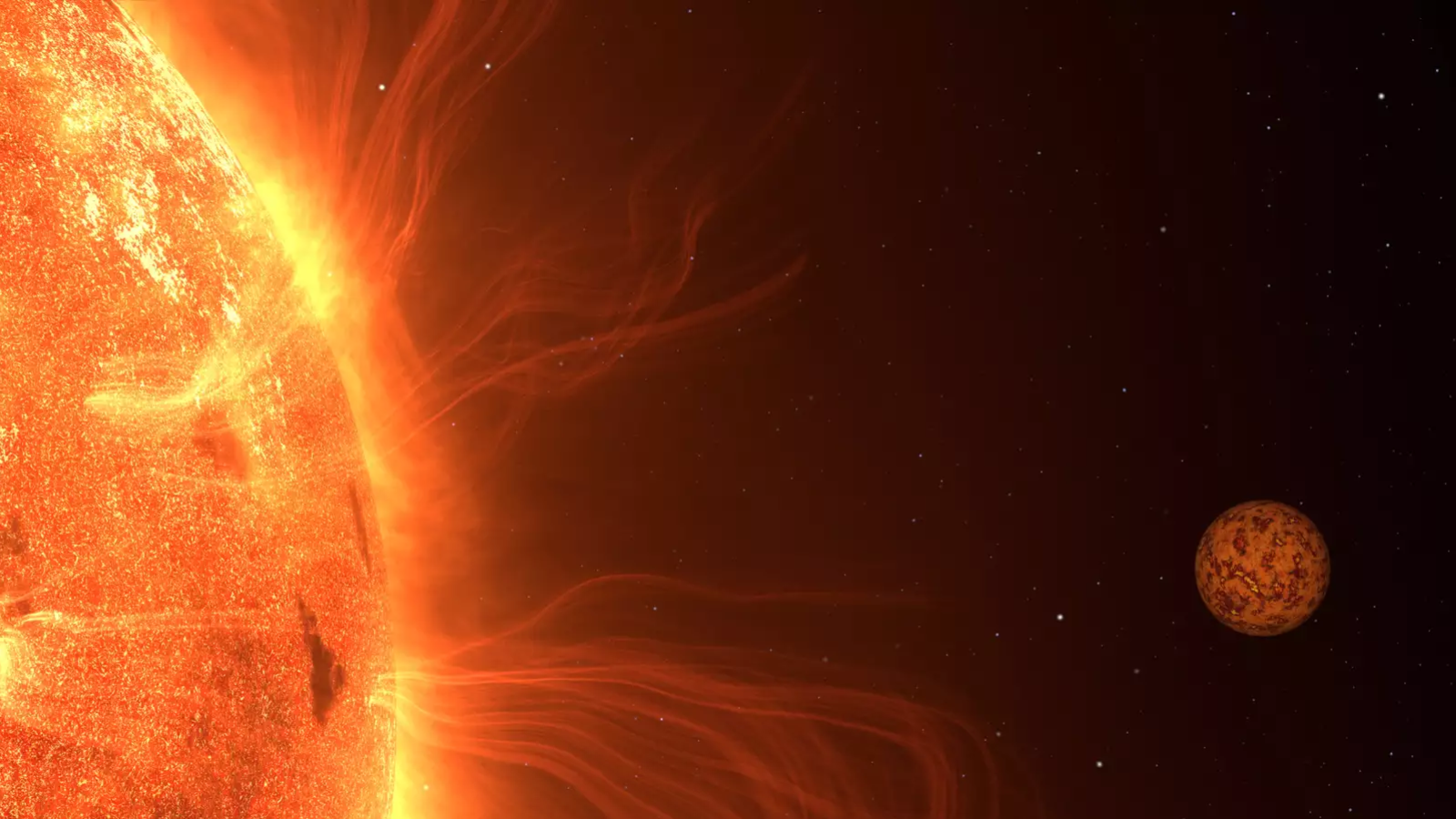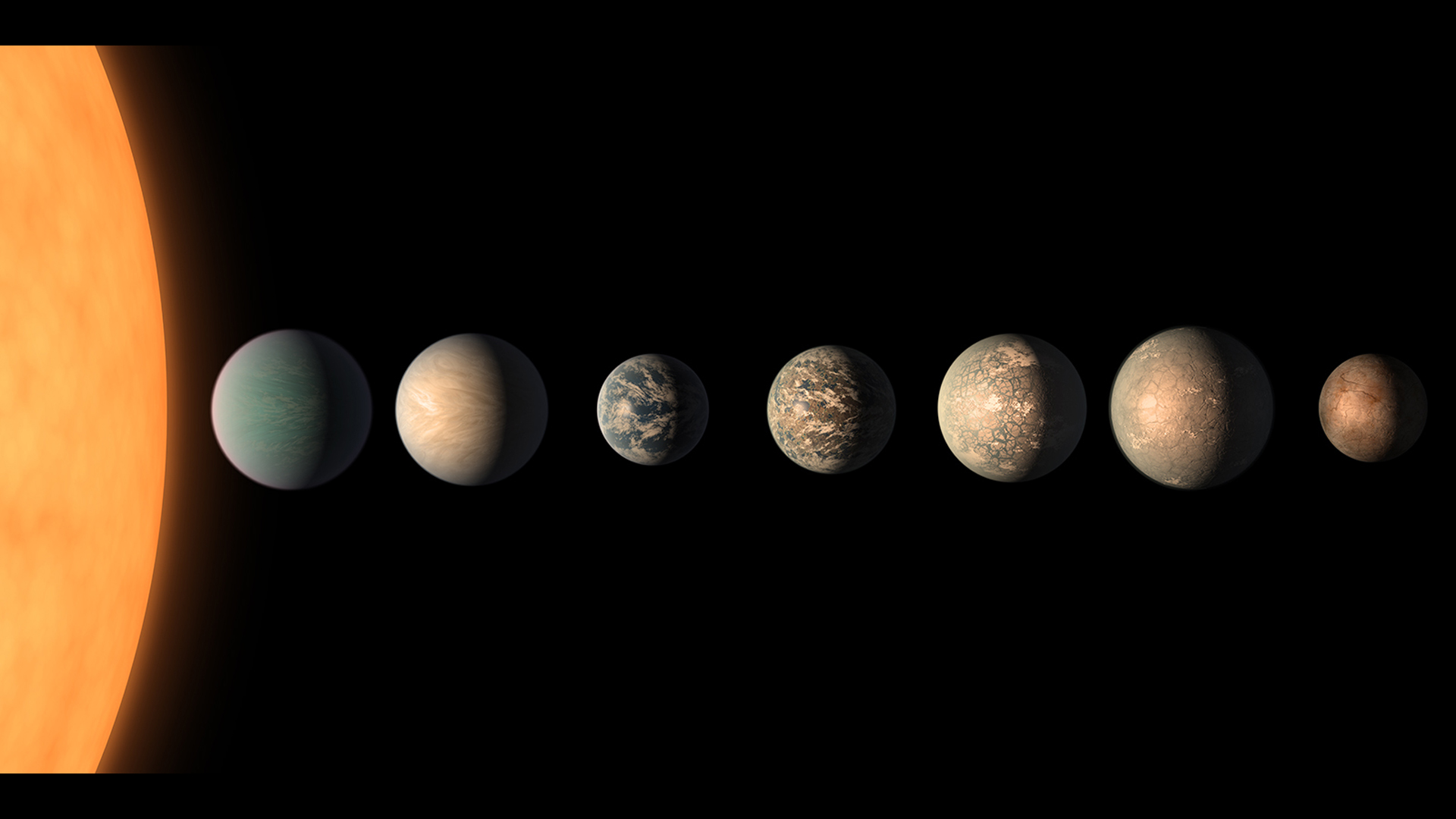
The innermost Earth-like planet in the famous TRAPPIST-1 system might be capable of supporting a thick atmosphere after all, according to new research.
Since the system of seven tightly-packed, Earth-sized worlds was discovered in 2017, huddled in remarkable harmony just 40 light-years from Earth, astronomers have tried to determine whether any support atmosphere, which is critical to harbor life as we know it.
Previous observations from the James Webb Space Telescope (JWST) have suggested all planets in the system would be barren, airless rocks thanks to violent, atmosphere-stripping radiation unleashed by their host star. However, a fresh analysis of JWST data on the innermost planet, TRAPPIST-1b, suggests that it may have a hazy, carbon dioxide-rich atmosphere. Alternatively, the new measurements also reveal an unexpectedly high temperature for TRAPPIST-1b's surface, potentially indicating that the world is roiling with volcanic activity.
Despite the system being the best-studied planetary system outside of our own solar system, detecting atmospheres on its planets has proven challenging. That is the result of the unusual characteristics of their tiny and cool host red dwarf star, which can mimic atmospheric signals that are already weak and hard to detect.
Does Trappist-1b resemble Saturn's moon Titan?
Earlier JWST measurements of the planet's radiation at a single wavelength of 15 micrometers suggested a thick carbon dioxide-rich atmosphere was unlikely since carbon dioxide strongly absorbs light at this wavelength and thus would have noticeably reduced the observed radiation.
That led researchers to conclude last year that TRAPPIST-1b is most likely a ball of rock whose dark surface would have been battered to inhospitality by stellar radiation and meteorite impacts.
In contrast, the new measurements, which were gathered at a different wavelength of 12.8 micrometers, suggest not only a thick, carbon dioxide-rich atmosphere but one that includes highly reflective haze, akin to smog seen here on Earth. That haze, the researchers say, causes the planet's upper atmosphere to be hotter than the layers below, creating an environment where carbon dioxide emits light rather than absorbing it, which could explain the lack of an expected dip in previous observations.
"One plus one is more than two—having two data points for Trappist-1b now allows us to explore alternative scenarios for its atmosphere, whether it exists or not," study co-author Leen Decin of KU Leuven in Belgium said in a recent news release.

Such dynamics are known to occur on Saturn's largest moon Titan, for instance, but "the chemistry in the atmosphere of TRAPPIST-1b is expected to be very different from Titan or any of the solar system's rocky bodies," study co-author Michiel Min of SRON Netherlands Institute for Space Research said in the same statement. "It is fascinating to think we might be looking at a type of atmosphere we have never seen before."
The researchers are now tracking how heat is redistributed on the planet as it circles the host star, which will aid them in determining the planet’s atmosphere.
"If an atmosphere exists, the heat should be distributed from the day side of the planet to its night side," said Michaël Gillon, an astronomer at the University of Liege in Belgium, who led the international team that discovered the seven TRAPPIST-1 planets. "Without an atmosphere, the redistribution of heat would be minimal."
This research is described in a paper published Monday (Dec. 16) in Nature Astronomy.







